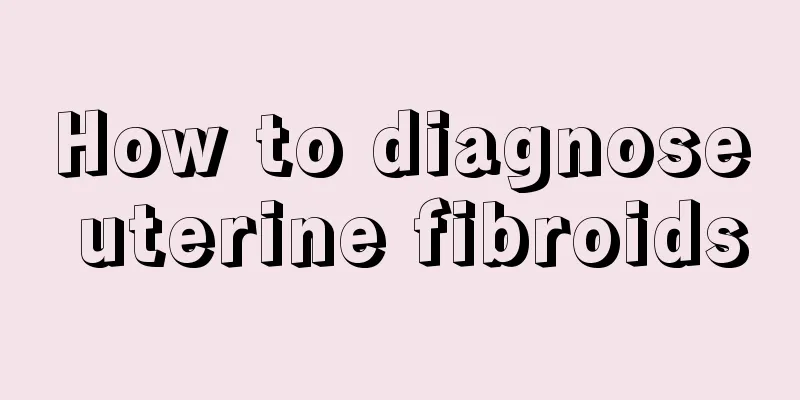How to diagnose uterine fibroids

|
The examination of uterine fibroids must be taken seriously, because only through examination can you determine whether you are affected by this disease, so as to take symptomatic treatment in time. After all, these reproductive diseases will bring great obstacles to women's physical health and reproductive health. Common ones include B-ultrasound examination and diagnostic curettage examination. 1. B-ultrasound examination. B-ultrasound examination is currently a common method for examining uterine fibroids, with an accuracy rate of over 93%. It can detect the number, location, size, and presence of uniform or liquefied cystic changes in fibroids. 2. X-ray examination. When the tumor is calcified, it appears as scattered consistent spots or shell-like calcifications, with a rough and wavy honeycomb-like capsule or edge. This is also an examination item for uterine fibroids. 3. Diagnostic curettage and dilation Small submucosal fibroids or dysfunction, uterine bleeding, and endometrial polyps are not easy to detect with bimanual examination. Curettage and dilation can be used to assist in diagnosis. If it is a submucosal fibroid, the surgical instrument may feel a convex surface rising up and then sliding down in the uterine cavity, or feel something sliding in the uterine cavity. This is one of the examination methods for uterine fibroids. 4. Hysterosalpingography. Ideal hysterography can not only show the number and size of submucosal fibroids, but also their location. Therefore, it is very helpful for the early diagnosis of submucosal fibroids. The method is simple, and the angiography at the site of the fibroid can show fullness and incompleteness in the uterine cavity. This type of examination for uterine fibroids is relatively common. Experts from Langfang Friendship Hospital recommend: Laparoscopic minimally invasive technology is still the preferred treatment for uterine fibroids, based on comprehensive considerations such as the patient's symptoms, fibroid size and location, age, and fertility requirements. |
<<: What to do if pregnant women have vulvitis
>>: How to effectively control uterine fibroids
Recommend
The consequences of untreated genital folliculitis
Folliculitis of the genitals is not mainly caused...
Can pregnant women drink sugar water?
Sugar water is a very common type of water in peo...
Where is Peru located? What is the climate in Peru?
Peru is a country in western South America, borde...
What color of fruits and vegetables are the most nutritious? If you don't know, you'll be at a big loss!
Vegetables and fruits are essential in a healthy ...
Detoxifying and beauty capsules
Detoxifying and beauty capsules have been very po...
Can I drink honey water when I am pregnant?
Pure honey can promote digestion, increase appeti...
Will menstruation flush out the fungus?
Vaginal candidiasis is a very common gynecologica...
Don't panic if your baby has abdominal pain. Both treatment and prevention are possible.
Expert Name: Luo Yuting **Expert introduction: **...
Where does the enlarged uterus hurt during pregnancy?
If a woman suffers from an enlarged uterus, she w...
What to do if pregnant women have phlegm in their throats and can't cough it out
Pregnant women often suffer from various diseases...
Is microwave treatment good for cervical erosion?
There are several treatments for cervical erosion...
How long does it take for the cervical tct test to produce results?
"Cervical TCT refers to cervical cytology, w...
Causes and treatment suggestions for brown vaginal discharge
The brown color of leucorrhea can be serious or m...
What should I do if I have moderate uterine prolapse?
Everyone must have heard of what uterine prolapse...
Pregnant women with high prothrombin time
With the improvement of medical standards today, ...









